Past Recipients
2024-2025
Barış Altan, Brandenburg Technical University
Dissertation title: Approaching Byzantine Heritage of Istanbul through Restoration Practices
Arsany Paul, University of Notre Dame
Dissertation title: The Medieval Coptic Eucharist: Liturgy and Private Devotion in Egypt
2023–2024
Yiğit Zafer Helvacı, University of Torino
Dissertation title: Archaeometric Analysis of Byzantine Mural Paintings from Eastern Crete, Greece
Sarah Elaine Mathiesen, Florida State University
Dissertation title: Yılanlı Kilise: Meaning and Identity in a Byzantine Rock-Cut Church
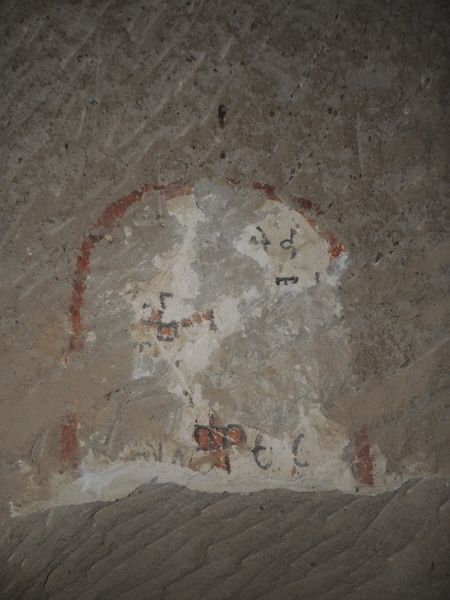
The Mary Jaharis Center Dissertation Grant sponsored on-site visits fundamental to the study of the rock-cut churches of Byzantine Cappadocia. My dissertation focuses on one rock-cut church, the Yılanlı Kilise (or, “Snake Church”) of the Ihlara Valley in southwest Cappadocia, Türkiye.
Two concrete results came of these site visits. First, the more thorough photographic documentation of funerary epitaphs and markers—painted shapes with inscriptions that resemble modern tombstones, placed just above the head of each grave—located in the Yılanlı funerary chapel and an auxiliary burial chamber. These markers also appear at Eğri taş Kilisesi and other sites along the Ihlara Valley, as well as at two churches in the Soğanlı Valley. These previously unnoted connections enable us to better contextualize Yılanlı within the cultural landscape of the region and supply critical insight into funerary practices.
The second result is the re-identification of a long-accepted label accompanying the angel that opposes a demon at the Weighing of Souls in the Yılanlı Last Judgment. Long identified as the angel Michael, a closer look reveals that enough of the inscription survives to be read instead as ο αγγελοc [του] κυριου, “the Angel of the Lord.” The Angel of the Lord thus appears three times throughout the church, within the Last Judgment, the Last Supper, and the Koimesis. Such a conspicuous repetition of a particular angelic identity asks us to reconsider the creation of meaning at Yılanlı, in which I argue that such repetitions build upon each other and create a complex, cohesive program.
Detail of a painted funerary epitaph, a heavily damaged, painted, upright slab with rounded top, decorated with a white field populated by letters and red equilateral crosses set within a red border. West wall, funerary chamber, Yılanlı Kilise, Ihlara Valley, Cappadocia, Türkiye. Photo credit: Sarah Mathiesen, 2024
Fieldwork centered on locating and recording any examples of grave markers similar to those found in the Yılanlı burial chamber, such as the one pictured above. In addition to the four in Yılanlı, multiple carved and painted examples mark graves in a rock cut space immediately adjacent to Yılanlı, which can be considered as an auxiliary, or over-flow, burial chamber for the church. Additional examples were located along the Ihlara Valley, with scattered examples elsewhere in Cappadocia, such as two in the Soğanlı Valley. The inscriptions likely record the name of the deceased and time of death.
Earnestine Qiu, Princeton University
Dissertation title: Place and Power in the Anatolian Alexander Romances
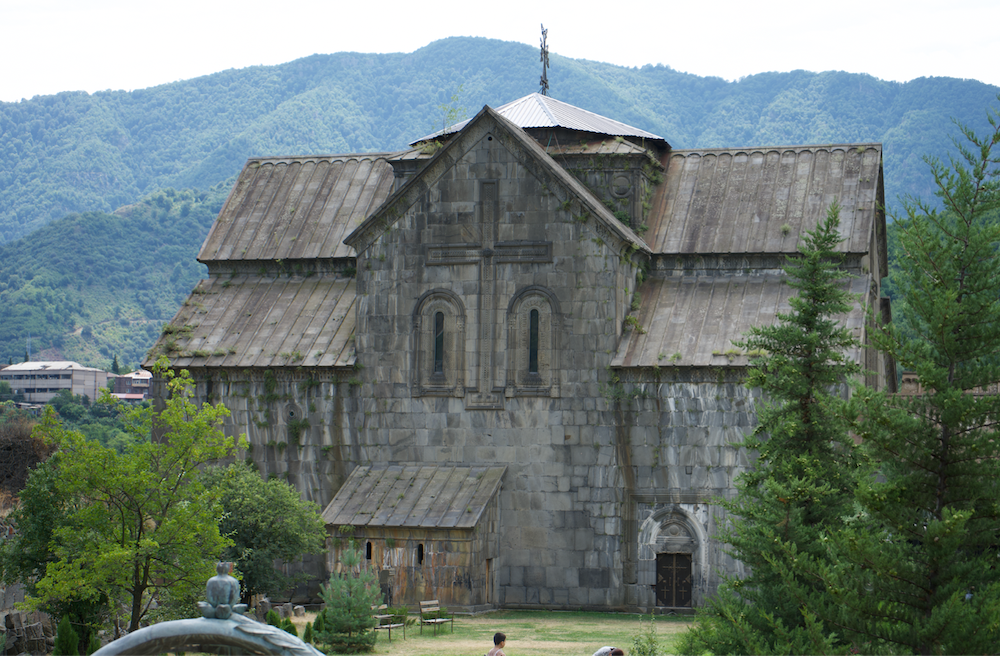
My dissertation project investigates questions of shared space and imagined histories in the Anatolian and Caucasus regions. I focus on two fully illuminated manuscripts of the Alexander Romance made in the Christian kingdoms of Anatolia in the fourteenth century, one from the Greek tradition and one from the Armenian tradition. Building on these two codices, my project also relies on other visual material from Anatolia and the Caucasus to formulate a new understanding of the eastern Christian world outside of Constantinople after 1204.
Generous support from the Mary Jaharis Center allowed me to travel to Europe this summer and complete portions of archival and site research crucial for the final stages of my dissertation. I visited libraries and museum collections in the United Kingdom and the Republic of Armenia for firsthand study of Armenian manuscripts that I was previously unable to access. I also had the chance to document the architecture and wall paintings of scholastic and monastic sites in Armenia and The Republic of Georgia, which yielded key details on the artistic exchanges among the Caucasian and Anatolian powers amidst shifting political realities. Meetings with local scholars and ongoing conversations have also guided my work on these artistic traditions. Research completed with the aid of the Mary Jaharis Dissertation Grant has prepared me for imminent completion of my dissertation as I write and edit my final chapters.
Akhtala Monastery, Lori, Republic of Armenia. Photo: Earnestine Qiu
Dorota Katarzyna Zaprzalska, Jagiellonian University
Dissertation title: Composite Icons as a Manifestation of the Sacralization of Images in Devotional Practice

With the generous support of the Mary Jaharis Center Dissertation Grant, I conducted a research trip to Georgia that allowed me to make significant progress on my dissertation, which focuses on so-called "composite icons" – icons consisting of two separate panels, usually from different times, that are connected by inserting a smaller icon into a larger one.
The extensive museum, library, and archival research, as well as photographing some composite icons still in use and venerated in churches, allowed me to assemble a bibliography and illustrative material for a chapter of my dissertation that focuses on Georgian icons. The research also led to some important discoveries – the number of icons that meet the definition of a composite icon is much larger than had been previously assumed. Their close analysis and comparison with material from other areas allowed me to situate this group within a broader perspective and to examine its various aspects. It can be concluded that the Georgian composite icons are among the oldest. Many of them are of a triptych form with movable wings that allow for the hiding and revealing of the embedded icon, which in some cases is removable and can be taken out of the cavity that houses it, which is not a common feature among composite icons. The Georgian examples demonstrate the internal diversity of the phenomenon of composite icons and constitute a field for focused research, so the grant was not only beneficial for my dissertation, but also provided new ideas for future projects.
Triptych with an inserted icon of the Virgin Mary and Child, 13th century, Svaneti Museum of History and Ethnography in Mestia, Georgia. Photo: Dorota Zaprzalska
2022–2023
Georgia Delli, University of Athens
Dissertation title: Samos in Middle and Late Byzantine Period. Archaeological, Historical and Topographical Study with Use of GIS and Archaeometry
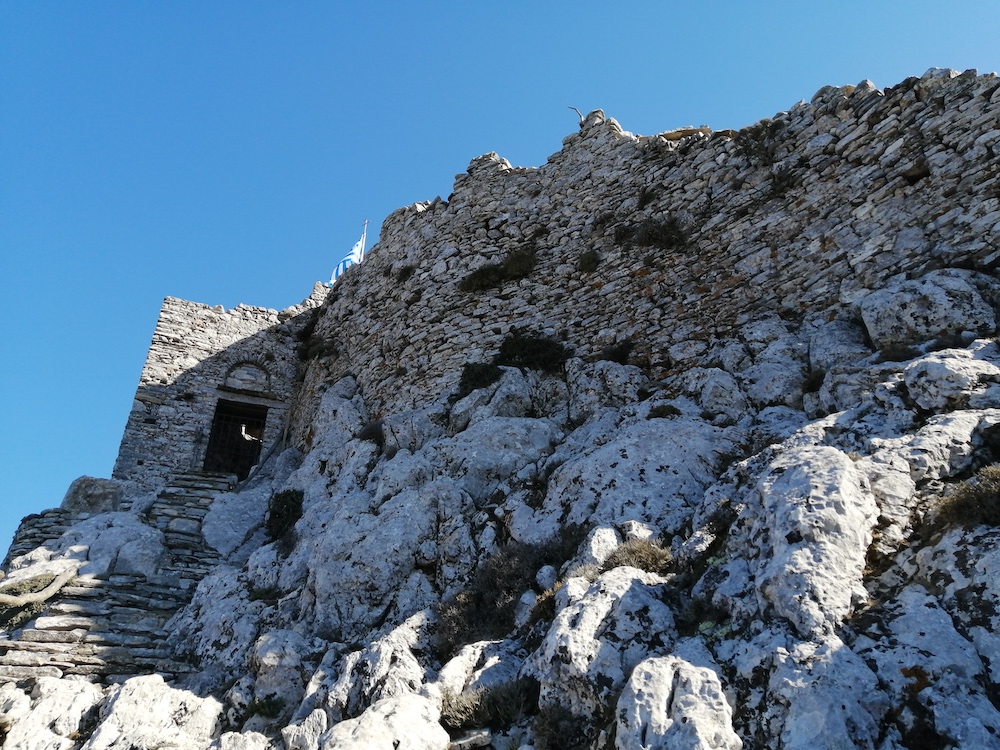
Samos, the main area of investigation, had already presented significant new data concerning the Βyzantine period. The month spent on the island, completed the research of the thesis producing significant results. Sites were partially cleared from the vegetation and gave interesting new data. The trip to Ikaria affirmed our speculation of a close connection between the two islands and the existence of constructions of the same period. A trip to Fournoi was also funded, giving us the opportunity to understand the connection between Samos – Ikaria – Fournoi.
Completing the research on the byzantine topography of Samos and the examination of monuments on the neighboring islands of Ikaria and Fournoi, resulted in understanding the interwoven network between the three islands that create a passage on the main trade route to and from Constantinople. Similarities in fortifications, monasteries, churches, industrial sites, and settlement patterns revealed a close connected human network that interacted with each other as well as the rest of the Byzantine empire.
Thanks to the Mary Jaharis Dissertation Grant this research was fulfilled, and at the same time, opened a new field of study that hopefully will give significant new data about the Byzantine past of the area in the future.
Coscina Castle, main gate and walls. Photo: Georgia Delli
Elena Gittleman, Bryn Mawr College
Dissertation title: Legacies of Ancient Theater in Middle Byzantine Visual Culture (ca. 843–1204)
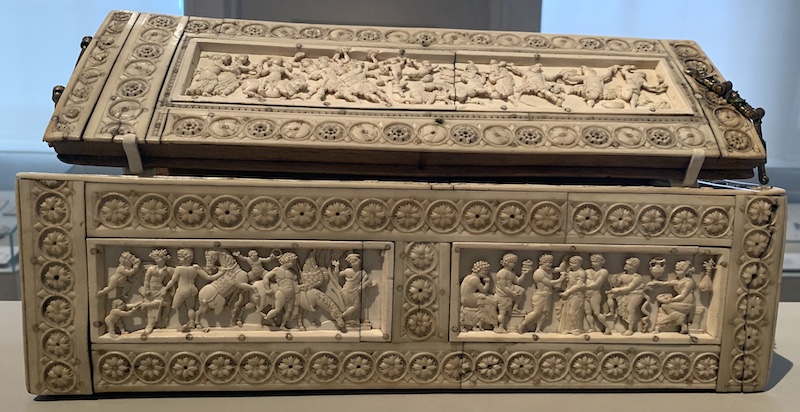
My doctoral research challenges the long-standing scholarly consensus that theater vanished in Byzantium by the end of the 7th century. I bring together a broad range of written and visual evidence, from theatrical metaphors and quotations in medieval imperial histories, to theaters transformed into churches, to a tenth-century carved ivory box with a theater mask, to illuminate the ways in which the cultural memory of theater was abandoned, adapted, and/or integrated into medieval Byzantine visual culture. Drawing on the contemporary critical theories of cultural memory and performance theory, my dissertation argues that the memories of ancient theater acted as an important mechanism through which imperial power and elite identity was created, retained, and performed as part of the Byzantine Empire’s conscious cultivation of its continuous Roman identity.
Thanks to the Mary Jaharis Dissertation Grant, I was able to complete the final stages of my archival and museum research in Athens, London, and New York. I examined original field and excavation notebooks at the American School of Classical Studies, and objects at the Victoria and Albert Museum and Metropolitan Museum of Art. First-hand access to these archives and objects was crucial to my dissertation as I strive to re-think the roles these monuments and objects played in the Middle Byzantine world. I would like to thank the Mary Jaharis Center for their support of my doctoral project.
Veroli Casket showing a putto pulling a theater mask over his face (far right), ivory, tenth century, Constantinople, Victoria and Albert Museum, London, UK (acc. no. 216-1865). Photo: Elena Gittleman
Görkem Günay, Koç University
Dissertation title: Rock Tales of Byzantine Thrace: Life in the Rupestrian Landscapes of Strandzha Mountains

In my doctoral research, I examine a group of lesser-known rock-cut sites in rural landscapes of the Strandzha Region in Thrace within a broader framework of human/ non-human interaction in Byzantium. I regard rock carving as a primary way through which Byzantine society transformed its living environment, in constant dialog with other space-making practices. In doing so, I aim to reconstruct multiple landscapes of the Strandzha Region, a borderland close to the everchanging northwestern frontier of the Empire and still part of the immediate hinterland of Constantinople.
In-person examination and meticulous documentation are paramount since most carved monuments in Byzantine Thrace remain yet undocumented and unpublished. Accordingly, I conducted a survey project spanning two summer campaigns, the second of which was completed in 2022 thanks to the generous grants of the Mary Jaharis Center and GABAM. In the fieldwork, the spatial characteristics and landscape relations of rupestrian sites, carved ornaments, furnishing, wall paintings, and graffiti were studied and recorded. In addition to the conventional technical drawings, the documentation procedure included the preparation of three-dimensional digital models either with Terrestrial Laser Scanning (TLS) or photogrammetry-based modeling.
In 2022, the survey focused on the funerary churches on the outskirts of the fortified hill in Sinanköy (Probaton), the residential complex in Kaynarca (Gehenna), agricultural installations around the ruinous castle in Erenler Village, and the outlying church (Direkli Mağara) in the forestland between Vize (Bizye) and Kıyıköy (Medeia). I am extremely grateful to the Mary Jaharis Center for supporting my research, which allowed me to buy professional services services for the TLS and aerial photogrammetry and partially covered the expenses of the small survey team.
Gizem Köroğlu working on architectural documentation of Direkli Mağara (Column Cave). Photo: Görkem Günay
Alexandros Zouvelos, University of Athens
Dissertation title: Complaints and accusations in the works of Eustathios of Thessalonike. Critical Edition, Translation and Commentary of the Texts: Epistola ad Thessalonicenses, De simulatione, Adversus implacabilitatis accusationem, Oratio anno auspicando habita, Ethopoeia
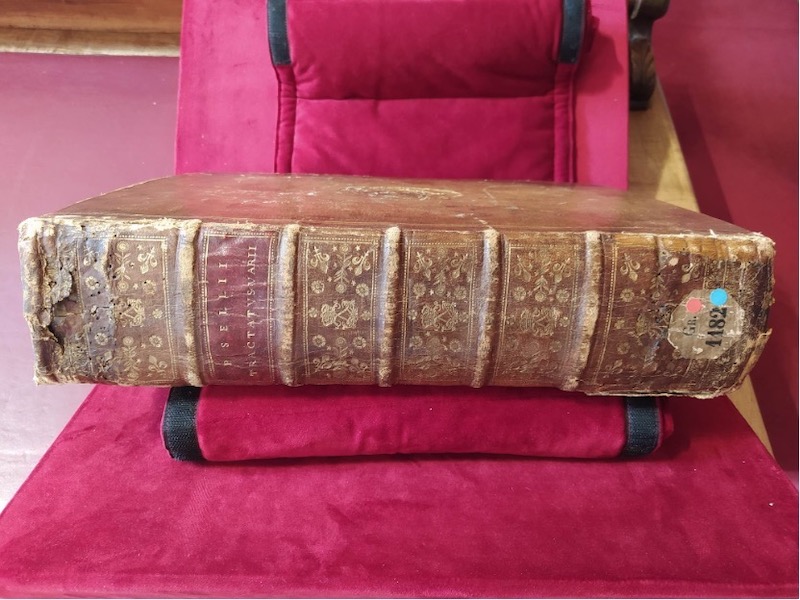
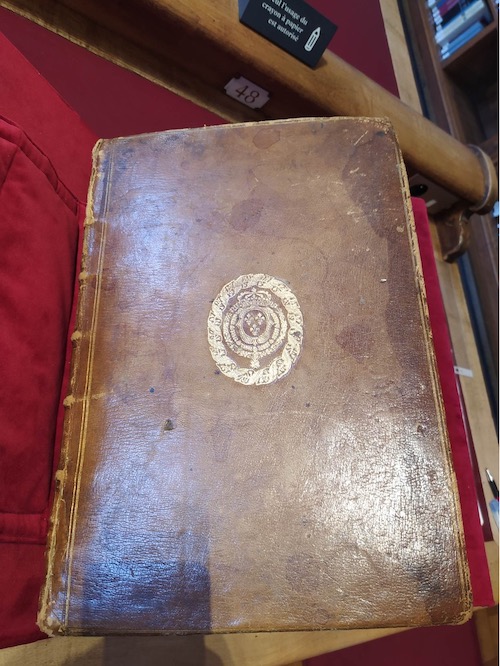
The Mary Jaharis Center’s dissertation grant greatly helped me on my PhD research. Thanks to it I managed to purchase high resolution scans of the three manuscripts that preserve the orations, whose edition I have undertaken, Parisinus gr. 1182 (P), Scorialensis Y-II-10 (S) and Basileensis A. III. 20 (B). These modern scans are vital tools for my work, since they clearly show details that were not visible in the dated microfilms that I had to consult before. They were used to validate the readings of P and S, containing Eustathios’ ethopoeia, whose critical edition and English translation were published in the journal Medioevo Greco 22 (2022) last October. B was previously unavailable to me, so after receiving it I was able to begin the transcription of the sermons it contains and the composition of the critical edition (new text and apparati). Numerous omissions and mistakes of the previous edition were found and will be corrected in the upcoming one. The grant sum was mostly used to cover my trip to Paris. In the beginning of June 2023 I was able to visit the National Library of France and thoroughly examine the manuscript 1182 in situ making many interesting and important remarks.

Top and middle: The late 12th-early 13th century manuscript Parisinus gr. 1182 preserving works of Michael Pselllos and Eustathios of Thessalonike. Bottom: The title of the ethopoeia (f. 247r). On the margin a later scribe noted “Non est epistola”. Photos: Alexandros Zouvelos
2021–2022
Alessandro Carabia, University of Birmingham
Dissertation title: Space, Population, and Economy in a Frontier Region: Liguria in the Context of the Western Byzantine Provinces AD 500-700
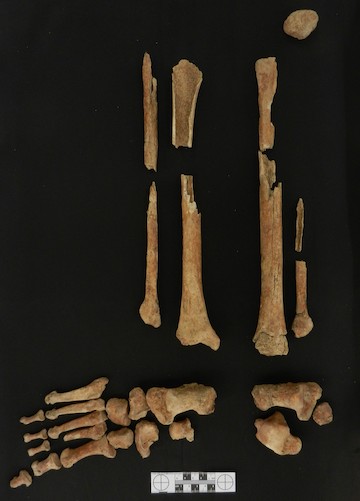
My PhD research focused on understanding the social, cultural, and economic mechanisms within Liguria, in north-western Italy, and along the Byzantine-Longobard frontier during the Byzantine occupation of the region (553-664 CE). Several issues involving this crucial moment of change that took place across the Mediterranean still remain open to discussion, such as the transition from the Classical to the Medieval city, the survival and adaptation of commercial networks or the impact of migrations. In order to address these issues, we must acquire more clearly defined chronologies, especially for the transition phase between Byzantines and Longobards in the mid-7th century, through radiocarbon dates, as well as review the available bioarchaeological data from burial areas throughout the region that have never been examined with archaometric and anthropological tools. The Mary Jaharis Dissertation Grant allowed me to begin this process, financing ten radiocarbon dates on human remains from three contexts, one in Genoa and two in Albingaunum (modern Albenga). The results have allowed me to localize the repurposing of urban spaces in Genoa, highlighting the Byzantine role in maintaining some form of structure while defining better chronologies for the last phases of North African ceramic exports to the region. As for Albingaunum, the radiocarbon analyses are helping to date the foundations of the churches of San Clemente and San Teodoro, answering questions on the Christianisation of the region while also better understanding the chronologies of the infiltration of funerary areas in urban contexts. Finally, the results are contributing to securely date burial typologies to either the Byzantine or post-Byzantine phases.
I am extremely grateful to the Mary Jaharis Center for supporting my research and helping to open new perspectives in the field of Byzantine Studies.
Human bones from an adult burial (context 6665) in masonry from San Clemente (Albenga). Photo: Dr. Nico Radi (MiC)
Elizabeth Zanghi, Sorbonne University
Dissertation title: El Nazar Kilise: étude globale d’un site mésobyzantin en Cappadoce

My doctoral research is focused on a Byzantine site in Göreme, Cappadocia. The site brings together more than a dozen rock-cut edifices including the El Nazar Kilise, a cruciform church surmounted by a central dome which is decorated with an almost entirely intact iconographical program from the middle-Byzantine period. The dissertation aims to study the church in relation to the other rock-cut spaces in its vicinity. Studying these spaces is essential to fully understanding, not only the church and its decoration, but also the community that used it. It offers a rare opportunity to study a community that was composed of both monastic and lay occupants, as it includes various monastic cells in addition to an aristocratic domestic complex and rooms with agricultural functions. Thanks to the generous support from the Mary Jaharis Center, I have been able to begin intensive and unobtrusive documentation of the entirety of the site. The project takes advantage of 3D documentation techniques, including photogrammetry and laser-scanning, as well as traditional documentation techniques, such as archaeological sketching and 2D photography. The Mary Jaharis Center Dissertation Grant allows me to work together with the Plemo-3D platform at Sorbonne University in addition to Turkish institutions to make this documentation a reality, and the preliminary results are promising. This precise documentation is not only important for the responsible examination of the medieval site, but also in creating a lasting record of the material culture in a region where tourism may threaten its cultural heritage.
The domestic complex at El Nazar, Göreme, Cappadocia. Photo: Elizabeth Zanghi
2020–2021
Jordan Amspacher, University of Tennessee Knoxsville
Dissertation title: Troya Victa: Empire, Identity, and Apocalypse in Frankish Chronicles of the Fourth Crusade
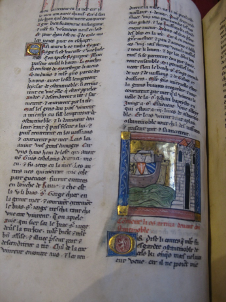
My dissertation focuses on twelfth-century Latin attitudes towards the Greeks and the ways in which contemporary ideologies contributed towards a Latin Christian mindset which could both preemptively envision and retroactively accept the submission of the Greek Empire to a Latin representative in the decades prior to the Latin conquest of Constantinople. My research prioritizes the ideological intersection of Trojan origin stories, imperial eschatology, and the twelfth century’s burgeoning interest in the role of the Greeks within salvation history. Grounded as my research is in intellectual history and the history of memory, manuscript composition and organization is a fundamental component of my project, as twelfth- and thirteenth-century Latin monastics practiced a form of lectio divina which prioritized rumination and introspection and which assumed a level of coherence on the part of individual manuscript components. Thanks to the generosity of the Mary Jaharis Center for Byzantine Art and Culture, I was able to examine manuscripts of the Fourth Crusade chronicles from the Kongelige Bibliotek in Copenhagen, the Bayerische Staatsbibliothek and Universitatsbibliothek in Munich, the Bodleian Library in Oxford, and the Bibliothèque nationale de France in Paris. I would like to extend my most sincere gratitude to the Mary Jaharis Center for so graciously sponsoring this project.
Paris, Bibliothèque nationale de France, MS fr. 12203, fol. 78v: Latin soldiers attack the walls of the Greek capital in Geoffrey de Villehardouin’s account of the Fourth Crusade, La Conquête de Constantinople
Alexis Gorby, University of Oxford
Dissertation title: The Social Life of Late Antique Sarcophagi: Location, Audience, Meaning
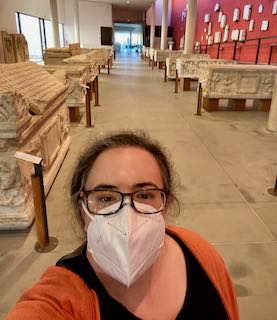
My doctoral research focuses on late antique and early Byzantine sarcophagi from known archaeological contexts. Through an investigation of case studies from across the Mediterranean, I examine sarcophagi in relation to their ritual and architectural settings. Drawing on theories from the spatial, sensorial, and emotional turns in Classics and Archaeology, I explore how sarcophagi would have been experienced by their audiences.
The Mary Jaharis Center Dissertation Grant allowed me to conduct site visits and research in Arles, France and Rome, Italy – two cities with rich collections of late antique sarcophagi. In Arles, I studied three sarcophagi now at the Musée départemental Arles antique but which were found in situ under the floor of a late antique mausoleum just outside of the city. I was granted access to the museum’s library and object files, allowing me to read key secondary sources not found in my home library and unpublished anthropological and archaeological reports. While in Rome, I spent much of my time either underground in the catacombs or in museums to better understand sarcophagi in their original contexts and beyond their iconography. On one catacomb tour the guide was kind enough to indulge my request and turn off the lights. For a brief minute, I experienced the space close to (although far from exact) what it would have been like in the fourth century. As I write up my case studies using insights, images, and evidence I gathered in Arles and Rome, I am incredibly grateful to the Mary Jaharis Center for supporting my research and dissertation.
Christoforos Kontonikolis, University of Athens
Dissertation title: Cosmas Vestitor (ca. 800 A.D.) and His Work. A Critical, Palaeographical and Philological Study
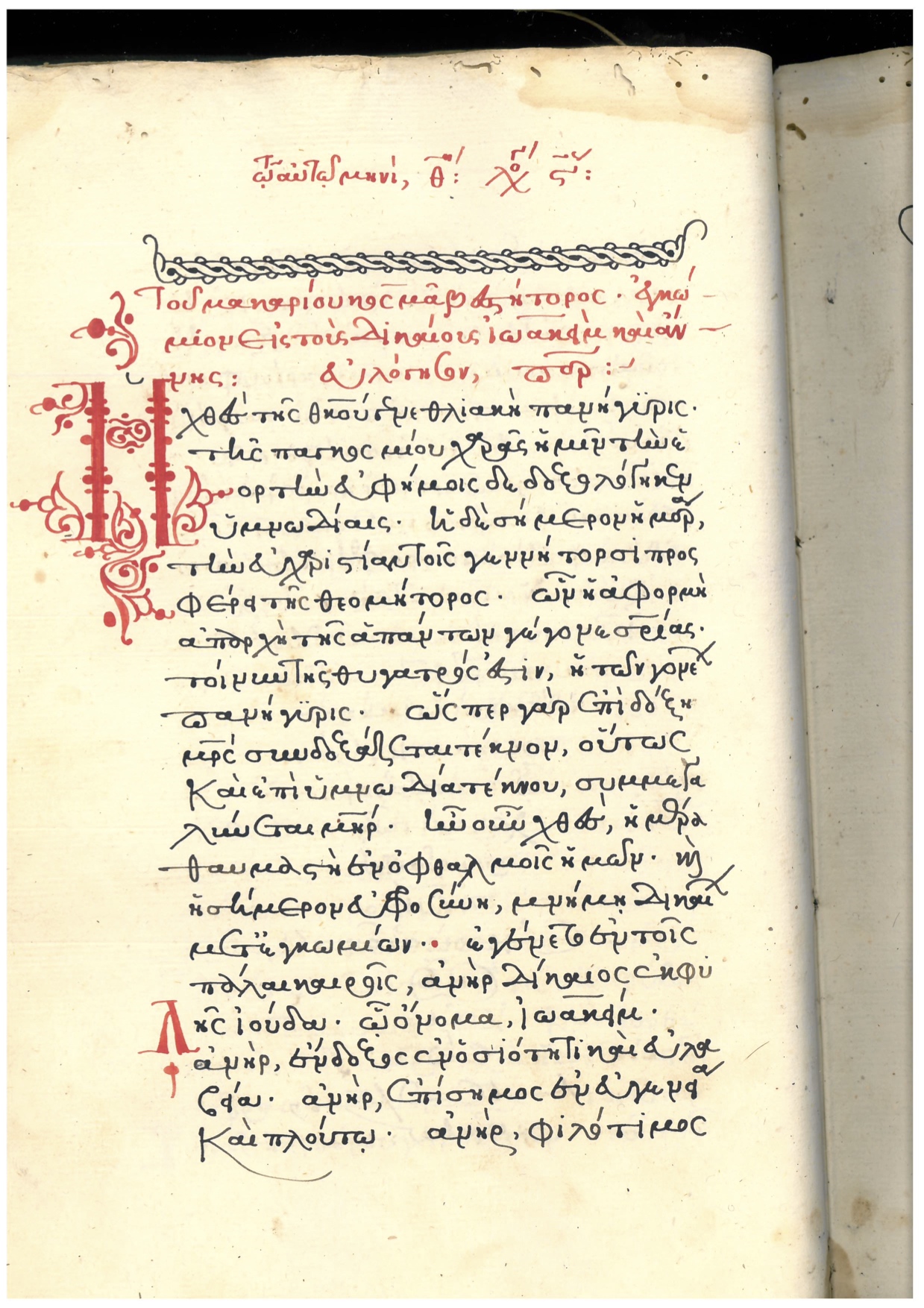
My PhD thesis focuses on Cosmas Vestitor (c. 800) and his work (mainly homilies, encomia and few hymns). In my research I give priority to a new critical edition of most of Vestitor’s work, either unpublished so far or imperfectly published. The edition takes into account the principles of textual criticism. A thorough commentary of Vestitor’s texts, together with a study of his era, education and theological background completes the edition. It was the generosity of the Mary Jaharis Center for Byzantine Art and Culture that enabled me to examine numerous manuscripts of Vestitor’s work (either in situ or in digital reproductions) that have been preserved in libraries of Europe, including the Bodleian Library in Oxford, the Vatican Library in Vatican City, the Biblioteca Vallicelliana in Rome, the National Library of St Mark in Venice, the Ambrosian Library in Milan and the monastic libraries of Mount Athos (mainly Dionysiou and Karakallou monasteries) to name but a few. During my last trip to Rome and Vatican City, together with the research in libraries, I took the opportunity to visit a lot of monuments, including the St. Peter’s Basilica, the Vatican Museum, and the Sistine Chapel. I am deeply grateful to Mary Jaharis Center for so generously sponsoring my project.
Flavia Vanni, University of Birmingham
Dissertation title: Byzantine Stucco Decoration: Cultural and Economic Implications across the Mediterranean World, 850–1453
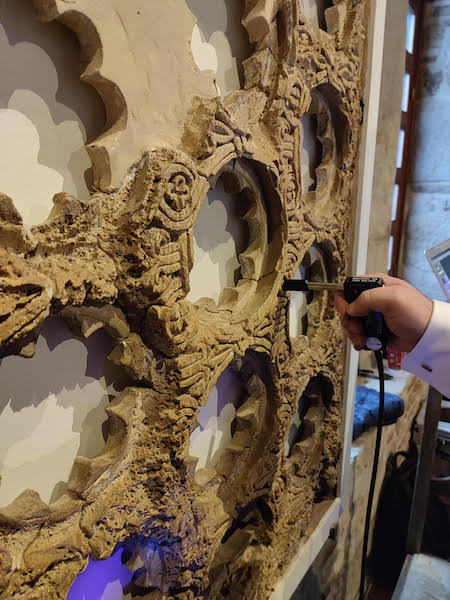
My dissertation offers the first synthetic evaluation of Byzantine stucco between the ninth and the fifteenth centuries. It brings together the results of disparate studies, with new material and textual evidence, to write, for the first time, a coherent narrative of the history of Byzantine stucco during the Middle and the Late Byzantine periods, of the people who worked it, and of its reception by Byzantine society. The Mary Jaharis Dissertation Grant allowed me to achieve two crucial parts of this research. First, it allowed me to stay in Athens to consult the material of the 1890s restorations of the monasteries of Hosios Loukas and Daphni at the Historical Archive of Antiquities and Restorations. This material allowed me to understand the historical condition of the stucco decoration of these two key monuments. The Grant also allowed me to carry out the first campaign of non-destructive analyses on the stuccoes of the katholikon of Hosios Loukas, today on display in the monastery’s museum. Using x-Ray fluorescence, micro-Raman, and FTIR spectroscopy, it was possible to gain information about the binders (lime/gypsum) and pigments used in the mixtures.
I am incredibly grateful to the Mary Jaharis Center for supporting my research allowing me to make a considerable step forward into the unexplored field of Byzantine stucco technology.
2019–2020
Livia Briasco, University of Rome La Sapienza
Dissertation title: Formal and Luxury Manuscript Production in the Late Komnenian Age (1120’s–1180’s)
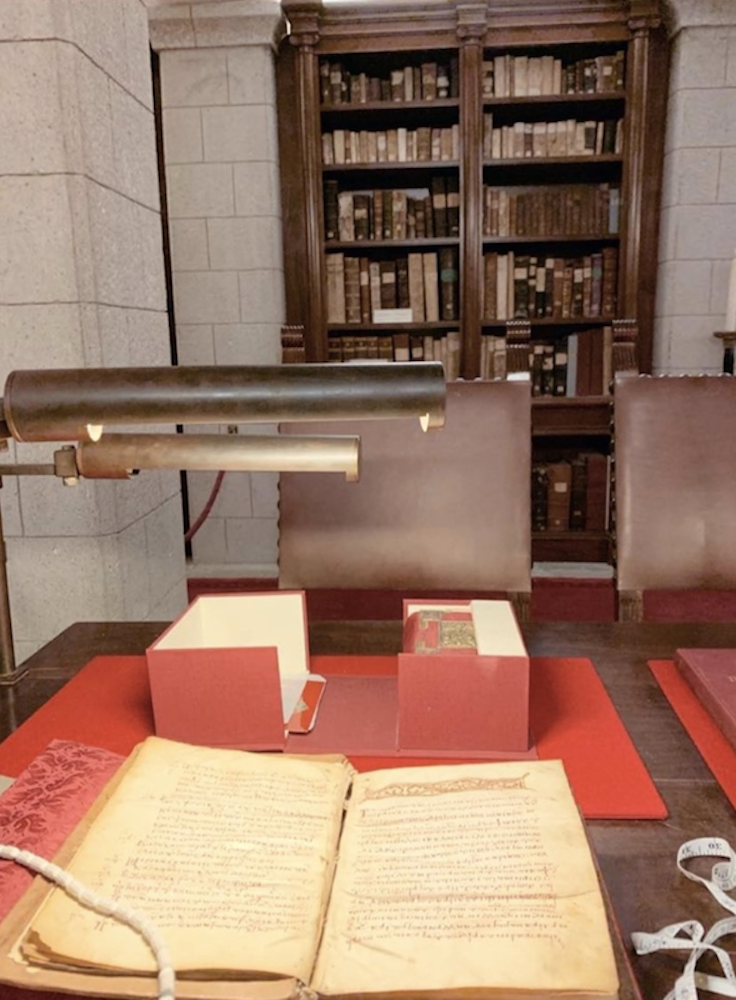
My PhD Dissertation focuses on a crucial but still relatively unknown period in the history of Byzantine handwriting: the 12th century and in particular the decades of John II and Manuel I Komnenoi’s reigns. Considering that the paleographical method is eminently comparative, the outcome of this kind of research is heavily dependent on the number of exemplars one can look at. Even though the digitalization process is progressing, many treasures are still stored, unknown, in libraries all over the world. In addition to this, material autopsia constitutes the only way to study all the choices made during the design and concrete construction of a book, that usually affect the handwriting. With Mary Jaharis Center’s generous support, I was able to enlarge the data base on which I could build new dating proposals and hand identifications. This grant gave me the chance not only to study nearly 50 manuscripts conserved in two of the most important Greek collections outside Italy - that of the French National Library in Paris and that of the Saint John’s Monastery Library in Patmos Island - but also to buy high-quality reproductions of specific manuscripts I was interested in, which are stored in Great Britain. I would like to express my sincerest gratitude to the Mary Jaharis Center for giving me this huge opportunity and for contributing to the success of my research.
Saint John’s Monastery Library, Patmos, Greece
Cyril Kennedy, Catholic University of America
Dissertation title: The Festal Vigil in the Byzantine Rite
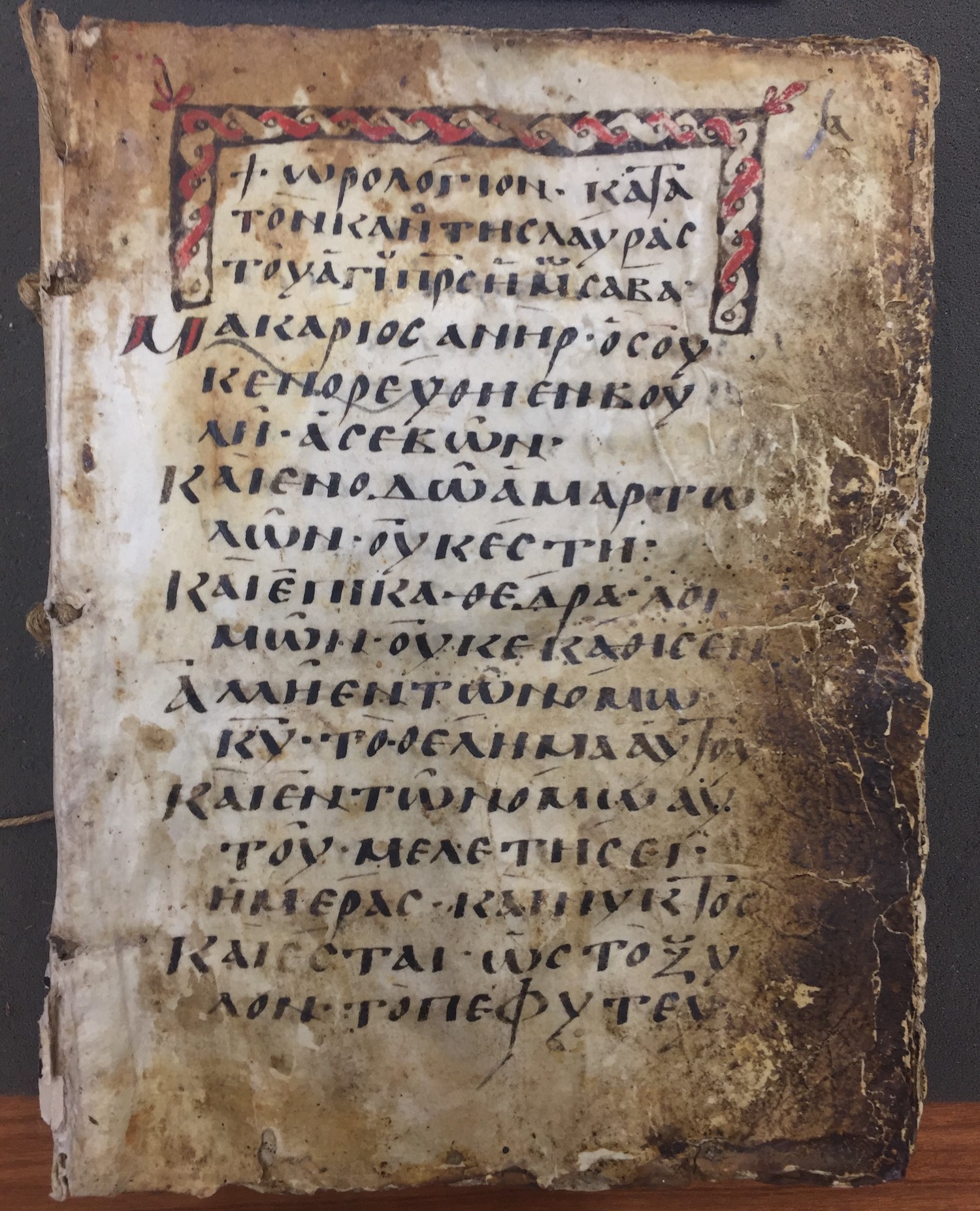
My dissertation, “The Historical Development and Theological Significance of Festal Vigils in the Byzantine Rite,” focusses on how Christians of the first millennium in Byzantium, Jerusalem, Sinai and elsewhere prayed at night, especially during vigils on the eves of feasts, as well as the theological meanings that they attached to such prayer. A generous grant of the Mary Jaharis Center meant that I was able to visit several monastic libraries in Greece and Egypt in February 2020. My visit to St. Catherine’s monastery at Mount Sinai was particularly fruitful: the monastery library contains several of the oldest manuscripts of the horologion, a genre of liturgical book that includes evening and nighttime offices. At Sinai I was able to examine several important manuscripts that give evidence of how monks and lay people prayed during the night, and the different ways such prayer was related to ideas of salvation and grace. I also spent a week on Mount Athos, visiting several monasteries and attending an all-night vigil on the feast of the martyr Charalampus. The experience of a liturgical service that lasted the whole night, even in a form considerably different from the first millennium, was invaluable in understanding the ascetic elements of all-night liturgical prayer as described in the sources.
I would like to thank the Mary Jaharis Center, as well as Fr. Justin of Sinai, Fr. Theodohos of Vatopedi, Fr. Gregorios of Xenophontos, and Fr. Parthenius of Dochiariou for their hospitality and help while visiting the monasteries and libraries.
First Folio of Sinai gr. 863
Justin Willson, Princeton University
Dissertation title: The Moods of Early Russian Art: A Belated Chapter of Byzantine Aesthetics (1438–1598)
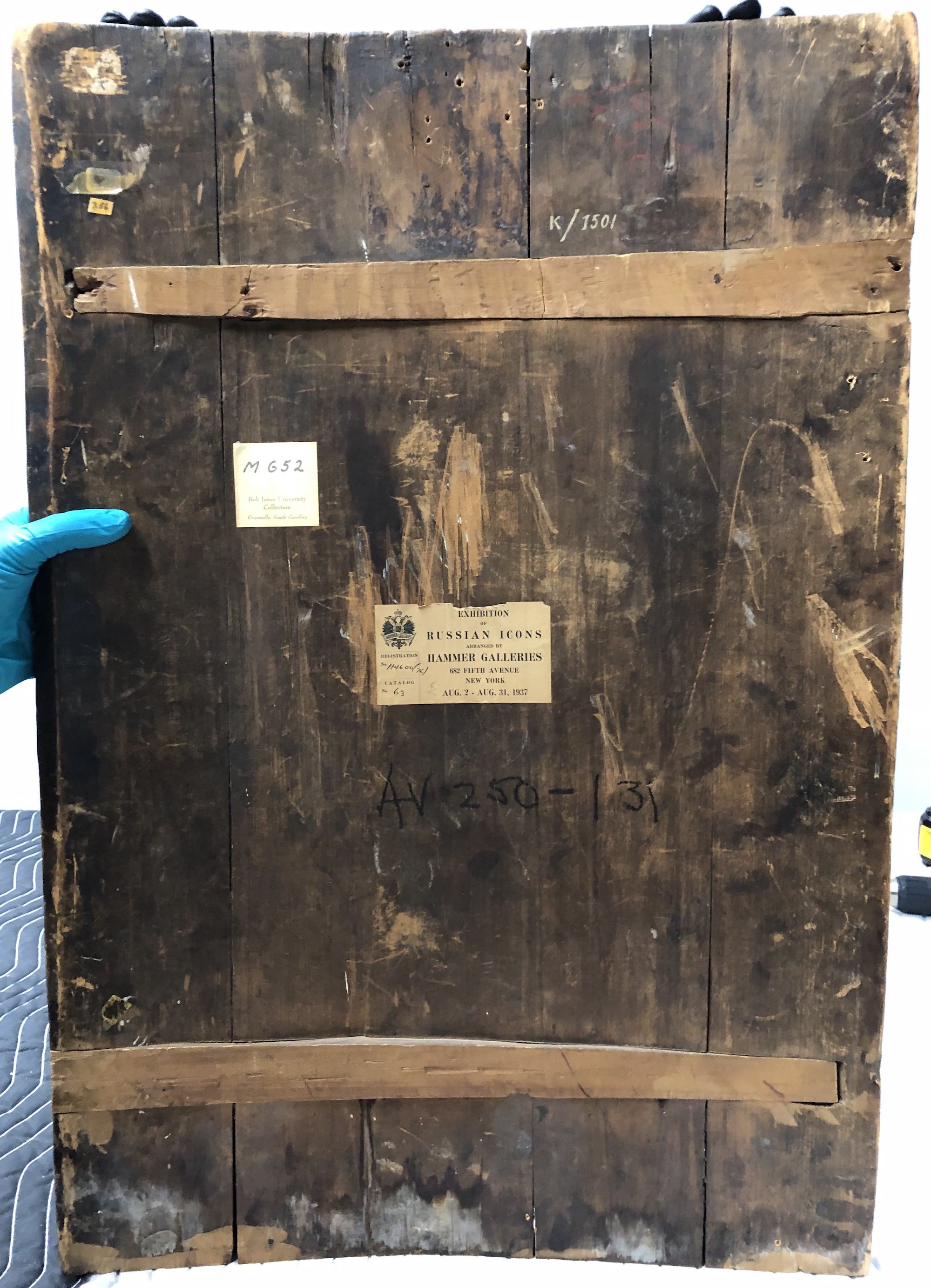
My grant project, “Early Russian Icons in American and British Collections,” focused on panels collected by American and British elites in the mid twentieth century. The British component of the project, which would have taken me to the Temple Gallery in London, had to be postponed due to Covid 19. But in the fall I was able to study the Davies Collection at the Chazen Museum of Art (Madison, WI) and the Bob Jones Collection at the Georgia Museum of Art (Athens, GA).
Sold off by the Soviets to pay war debts, Russian icons came West in droves during the 1920s and 1930s. For Americans the icon symbolized not only deep religiosity but a lost aristocratic world, as many of them hailed from the collections of counts and countesses. —Or so dealers often claimed. In fact many do have a secure provenance. Others had been refurbished over the years, as was traditional in the Orthodox tradition. However several are marked by methods of antiquing, with a faked patina and explanatory inscriptions taken from modern patternbooks.
My project had two aims. First, to develop skills in icon connoisseurship. Historians of Russian icons need to be able to differentiate between natural aging and deceptive imitation, and to be familiar with the range of techniques that masters used to construct panels, apply canvass and gesso, and build up layers of tempera. Second, I wanted to develop a vocabulary for describing the shades of nuance between the very modern binary of a ‘forgery’ and an ‘authentic’ artifact.
I’m grateful to the Mary Jaharis Center for its sponsorship of this project.
Reverse of an icon from the Bob Jones Collection at the Georgia Museum of Art (Athens, GA)
2018–2019
Ariel Fein, Yale University
Dissertation title: "The Most Wondrous of Man-Made Works": George of Antioch's Santa Maria dell'Ammiraglio and the Arab-Christian Community of Norman Sicily
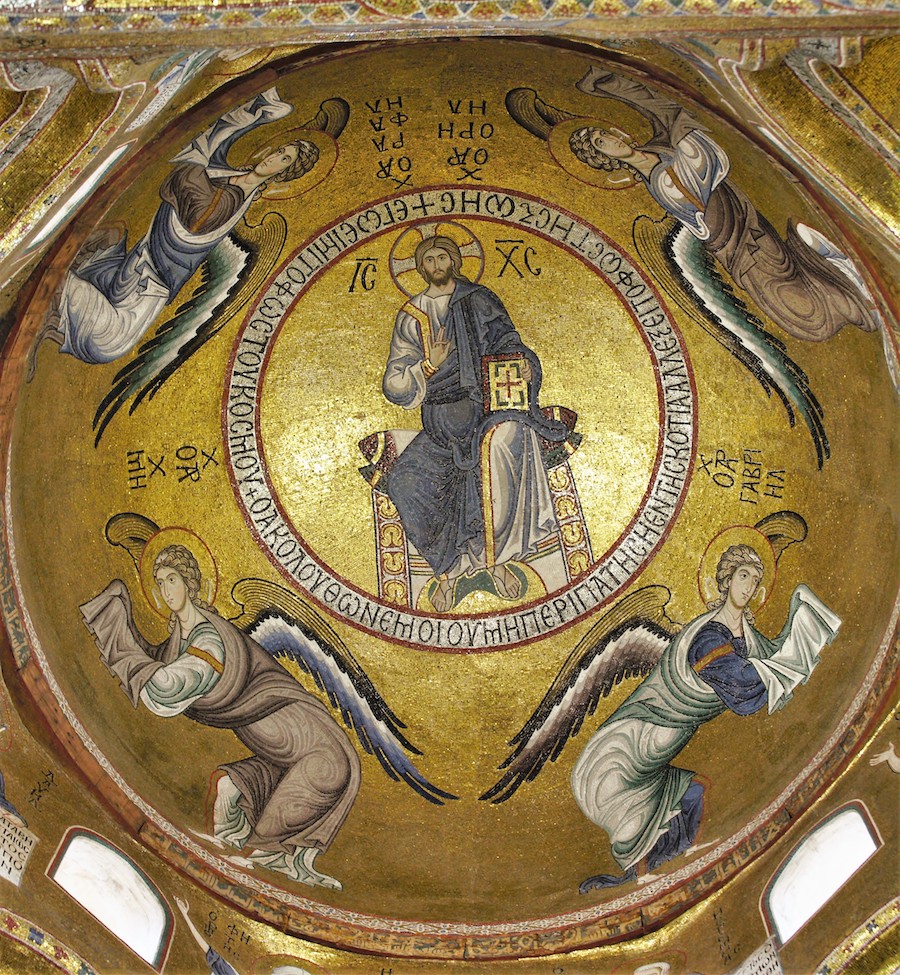 My dissertation, entitled “The most wondrous of man-made works”: George of Antioch’s Santa Maria dell’Ammiraglio and the Arab-Christian Community of Norman Sicily,” integrates for the first time the church’s Arabic epigraphy and Islamicizing material, thereby introducing the church’s Arab-Christian dimension into the analysis of its decorative program and reception. With generous support from the Mary Jaharis Center’s 2018-2019 Dissertation Grant, I was able to conduct research in Italy and Sicily on the history, function, and reception of the multivisuality of the twelfth-century Santa Maria dell’Ammiraglio (Martorana) in Palermo, Sicily. In the Biblioteca Ambrosiana, Archivio Storico di Palermo, and Archivio Storico della Cappella Palatina, I analyzed documentation of Palermo’s Arab-Christian community, their professions, properties, and worship practices. Moreover, archival documents in the Biblioteca Comunale di Palermo helped to define the urban context of the church and its neighboring aristocratic foundations, as well as the Martorana’s role in civic and religious ritual. At the same time, building on prior research in Palermo, I continued to document the Martorana’s Arabic and Greek epigraphy, much of which has not previously been translated or studied. By restoring the voices of the epigraphy and congregation to the study of the church, my research provides new insights into the original aspects of the Martorana, its patron, and the art and architectural traditions of Norman Sicily.
My dissertation, entitled “The most wondrous of man-made works”: George of Antioch’s Santa Maria dell’Ammiraglio and the Arab-Christian Community of Norman Sicily,” integrates for the first time the church’s Arabic epigraphy and Islamicizing material, thereby introducing the church’s Arab-Christian dimension into the analysis of its decorative program and reception. With generous support from the Mary Jaharis Center’s 2018-2019 Dissertation Grant, I was able to conduct research in Italy and Sicily on the history, function, and reception of the multivisuality of the twelfth-century Santa Maria dell’Ammiraglio (Martorana) in Palermo, Sicily. In the Biblioteca Ambrosiana, Archivio Storico di Palermo, and Archivio Storico della Cappella Palatina, I analyzed documentation of Palermo’s Arab-Christian community, their professions, properties, and worship practices. Moreover, archival documents in the Biblioteca Comunale di Palermo helped to define the urban context of the church and its neighboring aristocratic foundations, as well as the Martorana’s role in civic and religious ritual. At the same time, building on prior research in Palermo, I continued to document the Martorana’s Arabic and Greek epigraphy, much of which has not previously been translated or studied. By restoring the voices of the epigraphy and congregation to the study of the church, my research provides new insights into the original aspects of the Martorana, its patron, and the art and architectural traditions of Norman Sicily.
Arabic and Greek epigraphy in the Martorana dome, Martorana Church, Palermo, Sicily. Photo: Ariel Fein
Franka Horvat, UCLA
Dissertation title: Insular Networks in the Middle Ages: The Art and Architecture of the Elaphiti Islands, Croatia
My dissertation focuses on the Elaphiti archipelago off the coast of Ragusa (modern Dubrovnik) in the medieval period. I aim to reconstruct the socio-economic relations, artistic endeavors and religious confessions of the medieval islanders, their relationship to the closest mainland center of Ragusa, as well as patterns of connections to neighboring regions and the wider Mediterranean. The Mary Jaharis Dissertation Grant generously supported my research trip to the Elaphiti Islands and Dubrovnik, where I examined the copious material remains on the islands that can only be understood when studied in situ, and initiated archival research in one of richest archives of the Mediterranean – the Archive of Dubrovnik. While my research at the Archive was remarkably fruitful, what stood out the most was the time I spent on the islands. Visiting the monuments personally and documenting them photographically and through drawings will enable me to continue analyzing the material from the distance. It was equally important that I get intimately acquainted with the landscape. I spent hours and hours walking around the islands, examining not only the paths and abandoned structures that reveal traces of vanished medieval settlements, but also paying attention to the vegetation, as well as patterns of intervisibility and interconnectivity. Interacting with the local population made me realize that I should incorporate ethnographic approaches into my methodology. Overall, the data and insights I acquired on this trip will ensure the successful continuation of my project, and I am grateful to the Mary Jaharis Center for giving me this opportunity.
Mark Huggins, University of Edinburgh
Dissertation title: The Reception of John Chrysostom in Byzantium: A Study of the Catechetical Homily on Pascha
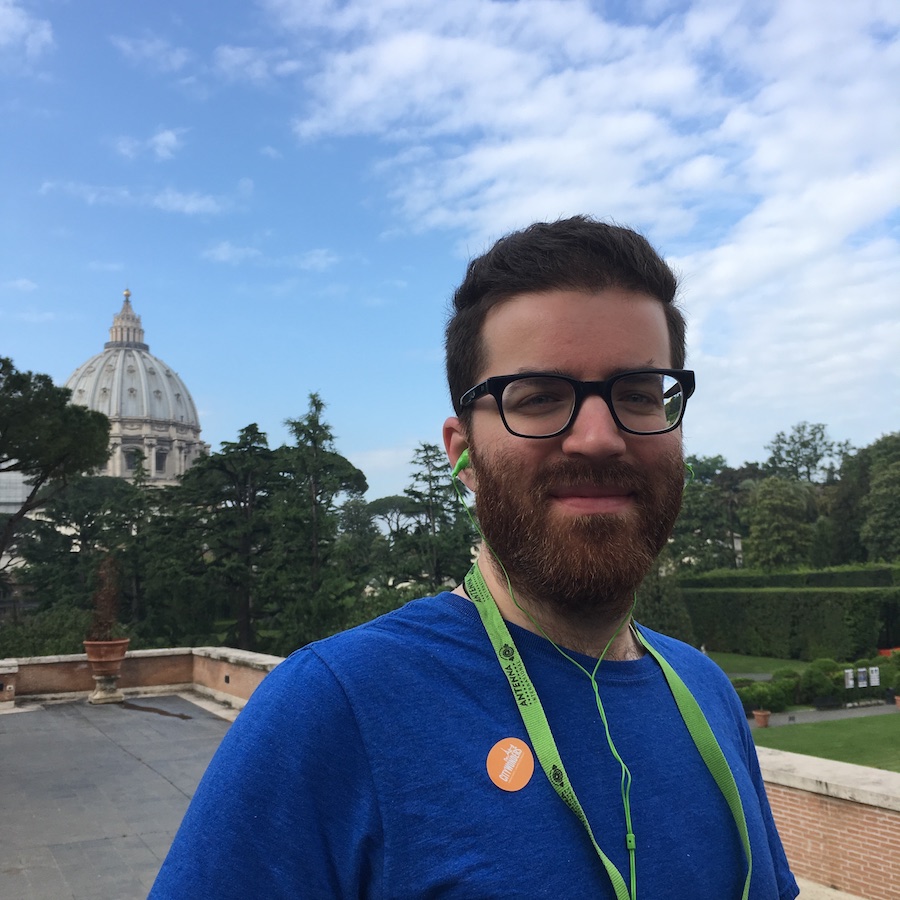
Due to the generous support of the Mary Jaharis Center for Byzantine Art and Culture’s Dissertation Grant, I was able to make the single most important research trip of my PhD studies. I used the grant money to visit the rich collections of Byzantine manuscripts scattered throughout the Italian peninsula, as well as in Sicily. Being based in the north, I was able to visit Venice, with its almost unparalleled resources in the Biblioteca Nazionale Marciana.
From there, I travelled to Sicily, Messina specifically, formerly one of the most important centers of Byzantine spirituality on the island – which itself had been a prized Byzantine possession in the Mediterranean until it’s eventual loss to Arab invasions.
Nevertheless, the most significant aspect of my trip was undoubtedly the visit to the Biblioteca Apostolica Vaticana in the Vatican City. It was there that I had the invaluable opportunity to study almost all of the oldest surviving manuscript witnesses in the world that preserve the Catechetical Homily on Pascha. This was a highly significant visit because it showed me how the Catechetical Homily was immediately exported from the environs of Constantinople, where Theodore the Stoudite had initially begun to use it, to the Italian peninsula within a century of the great monastic reformer’s death.
Overall, this crucial support from the Mary Jaharis Center for Byzantine Art and Culture’s Dissertation Grant has without doubt provided me with the ability to make the defining research trip of my PhD studies, giving me access to the most important historical manuscript witnesses to the single most popular Byzantine homily attributed to John Chrysostom – the most popular author in Greek of any age. I am profoundly grateful to the committee for its generosity in supporting my research and making such a significant research trip, otherwise impossible for me, a reality.
Hallvard Indgjerd, University of St. Andrews
Dissertation title: Settlement and Contact on Late Roman and Byzantine Naxos
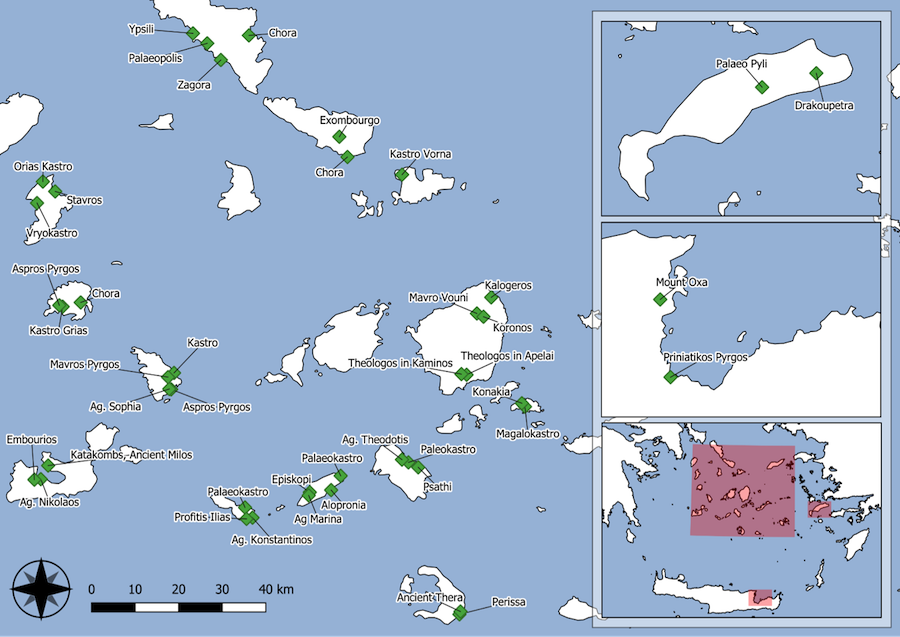
In my PhD project I study settlement patterns and contact networks on South Naxos and the Lesser Cyclades in the Late Roman and Byzantine periods on the basis of surface pottery from recent and ongoing landscape surveys. I received the Mary Jaharis Dissertation Grant for 2018-19 to carry out field observations in the South Aegean in order to contextualize my data collected through intensive field survey in the Central Cyclades, with a specific focus on fortified sites and connections between Early Byzantine coastal sites and fortifications.
During the summer of 2018, I travelled in the Cyclades and on Crete investigating known and potential sites. The field work covered 15 islands and 43 sites of interest. The small size of the islands and the rugged terrain meant that bicycling and hiking proved effective modes of getting to the sites, which additionally have led to a better understanding of the landscape and site placement.
Good parallels to the sites in my study area were found, especially Mount Oxa on Crete, Perissa and Ancient Thera on Santorini and Kalogeros on Naxos. However, equally importantly, a number of proposed Late Roman and Early Byzantine fortified sites did not produce any evidence of activity from this period (e.g. Oria Kastro on Kythnos and Palaeokastro on Ios).
2017–2018
Megan Boomer, University of Pennsylvania
Dissertation title: Landscapes of Salvation: Architecture and Memory in the Latin Kingdom of Jerusalem
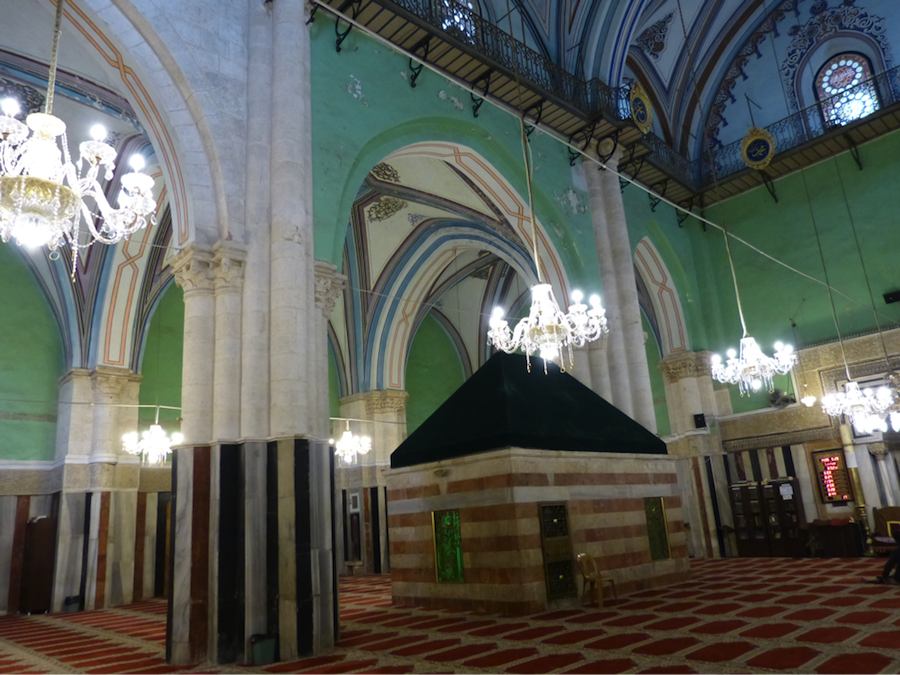 Through the generous support of the Mary Jaharis Center, I traveled to Israel and Palestine in February 2018 to conduct research for my dissertation, Landscapes of Salvation: Architecture and Memory in the Latin Kingdom of Jerusalem. The primary goal was to use recent conservation projects in the Church of the Holy Sepulchre, Church of the Nativity in Bethlehem, medieval Church at Abu Ghosh, and Tomb of the Patriarchs in Hebron to reconsider our understanding of the monuments’ twelfth-century chronologies and appearance. During the trip, I discussed technical findings with restorers and custodians, and documented newly visible masonry, mosaics, and paintings. The resultant images and on site analyses are invaluable for my project, which examines how Latin Kingdom architecture, decoration, and liturgy presented the sacred past to twelfth-century Christian and non-Christian viewers.
Through the generous support of the Mary Jaharis Center, I traveled to Israel and Palestine in February 2018 to conduct research for my dissertation, Landscapes of Salvation: Architecture and Memory in the Latin Kingdom of Jerusalem. The primary goal was to use recent conservation projects in the Church of the Holy Sepulchre, Church of the Nativity in Bethlehem, medieval Church at Abu Ghosh, and Tomb of the Patriarchs in Hebron to reconsider our understanding of the monuments’ twelfth-century chronologies and appearance. During the trip, I discussed technical findings with restorers and custodians, and documented newly visible masonry, mosaics, and paintings. The resultant images and on site analyses are invaluable for my project, which examines how Latin Kingdom architecture, decoration, and liturgy presented the sacred past to twelfth-century Christian and non-Christian viewers.
James Morton, University of California, Berkeley
Dissertation title: Byzantine Canon Law and Medieval Legal Pluralism: The Southern Italian Manuscripts (10th–14th Centuries)
With the generous funding of the Mary Jaharis Center, I travelled to Moscow in June 2018 to make a detailed study of three medieval Greek manuscripts in the State Historical Museum (SHM). In my PhD dissertation, ‘Byzantine Canon Law and Medieval Legal Pluralism: The Southern Italian Manuscripts’, I provide the first historical study of a body of manuscripts of Orthodox religious law (known to the Byzantines as ‘nomocanons’) that were produced by Greek communities in medieval southern Italy. While these were products of Byzantine legal tradition, the medieval Italo-Greeks continued to produce and use nomocanons long after the Byzantine Empire had lost control of the region to the Latin-rite Normans and their successors. The Italo-Greek nomocanons thus provide a fascinating insight into the religious and legal life of the Greek Christians of southern Italy under Latin rule.
Of the three manuscripts in Moscow, two had been identified by scholars as southern Italian. On studying them more closely, I concluded that one of these two had probably been misidentified; however, I found that a third, hitherto unattributed, manuscript was almost certainly produced in Italy’s Salento peninsula. All three manuscripts had found their way to Mount Athos by the seventeenth century, where the Russian monk Arsenii Sukhanov collected them in 1654 to bring back with him to Moscow. The research that I conducted in the SHM was of great help to my dissertation, which I successfully submitted in August 2018. I am very grateful to the Mary Jaharis Center for its support.
Daria Resh, Brown University
Dissertation title: Early Metaphraseis in Byzantine Hagiography (c. 800–c. 1000)
2016–2017
Evan Freeman, Yale University
Dissertation title: Ritual Object, Ritual Space: Art, Agency, and Performance in the Middle Byzantine Liturgy
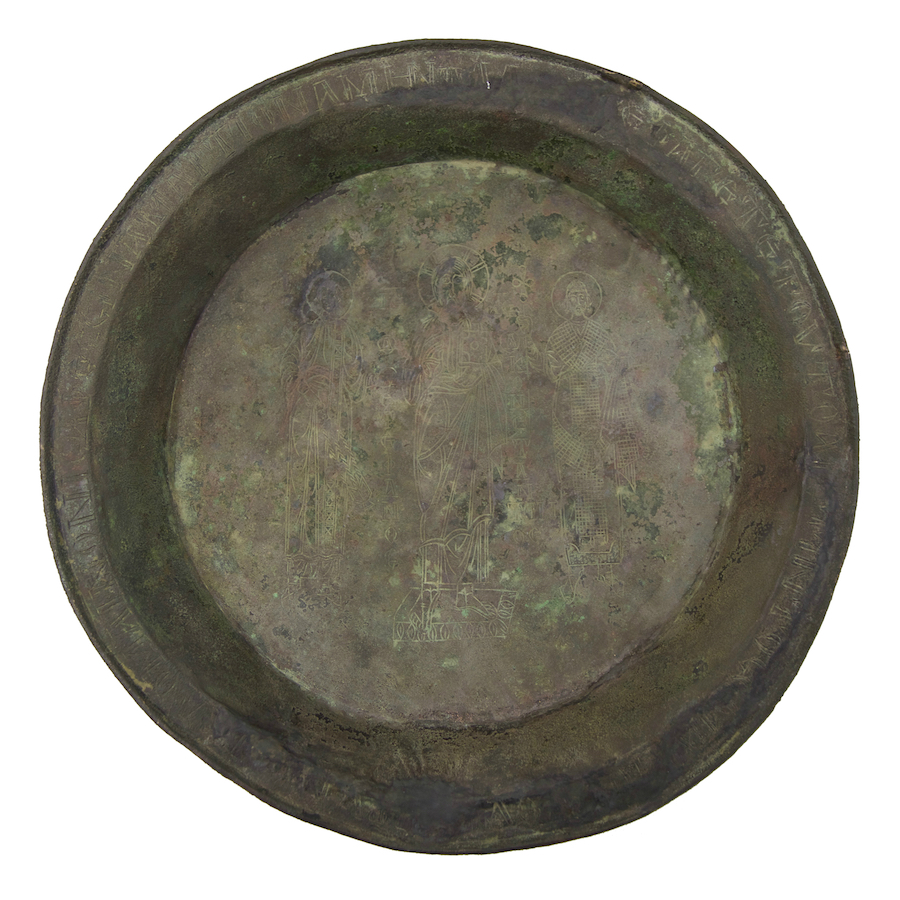
I suspect that few people associate modern-day Germany with Byzantine liturgical arts. But as early as the Fourth Crusade’s sack of Constantinople in 1204, several portable liturgical objects have been preserved in German churches, and more recently, museums and private collections. The generous support of the Mary Jaharis Center for Byzantine Art and Culture enabled me to study many of these objects in Germany in October 2016.
Like the Crusaders, modern scholars have often focused on Byzantine objects displaying costly materials and skilled craftsmanship, such as the resplendent, silver-gilt Halberstadt paten and the richly enameled Limburg cross-reliquary. These are important exemplars of Byzantine liturgical art, but by themselves paint an incomplete picture.
This grant also enabled me to examine several base-metal objects, mostly unstudied, in Berlin, Cologne, and Munich. These represent a larger body of modest objects that were probably “mass produced” and widely distributed to churches throughout the empire.
Liturgical textiles were also prominent in Middle Byzantine church ritual, worn by the clergy and draped over the chalice and paten, although very few survive. Three important examples are preserved in Germany: an embroidered epitracheolion in Eichstätt, and two embroidered Eucharistic aers in Halberstadt.
This generous grant from the Jaharis Center has been instrumental in helping me catalogue and study Middle Byzantine liturgical objects—their varied forms and materials, iconographic decoration, and inscriptions—as well as considering their use in the divine liturgy. These objects offer important insight into the material culture of the liturgy and broader culture of Byzantium.
Theodora Konstantellou, University of Athens
Dissertation title: Defining Factors in Local Artistic Production in the Periphery of Byzantine World: The Case of the Island of Naxos, Greece
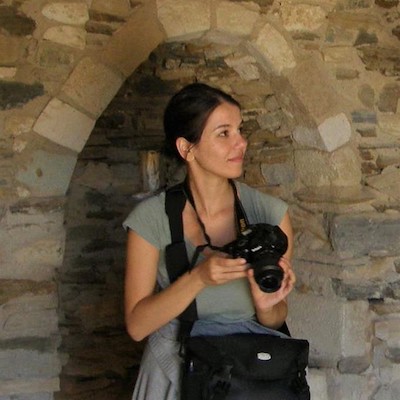
Thanks to Mary Jaharis Dissertation Grant two projects, crucial for the completion of my thesis (Title: Defining Factors in Local Artistic Production in the Periphery of Byzantine World: The Case of the Island of Naxos, Greece), were successfully accomplished. A three-week field trip in Naxos gave me the opportunity to photograph and document systematically the architecture, inscriptions and the wall paintings of 45 churches, distributed over a large part of the island. Archival and library research was also conducted in local libraries. This research enabled me to compile an extensive corpus of monuments and an image database of this material.
A three-week research trip in Italy allowed me to study in Libraries, specializing in the areas of Medieval Studies, in Venice and to visit monuments and museums in Venice, Florence and Rome. The libraries resources and images collections enabled me to enrich and update my thesis’s literature with a substantial corpus of new bibliography and pictures of late medieval Italian art. Thanks to this valuable academic material and artistic evidence, a well-defined and comparative framework for the material I examine was established.
All in all, the grant by the Mary Jaharis Centre for Byzantine Art and Culture benefited my research immensely and contributed to the successful and timely completion of my thesis.
Alice Isabella Sullivan, University of Michigan
Dissertation title: The Painted Fortified Monastic Churches of Moldavia: Bastions of Orthodoxy in a Post-Byzantine World
The Dissertation Research Grant from the Mary Jaharis Center for Byzantine Art and Culture allowed me to travel to Europe and complete the onsite research for my dissertation. I studied Moldavian manuscripts from collections in Vienna and Romania, as well as liturgical objects and textiles that I was not able to access, study, and photograph in the past. A few liturgical textiles that I examined during this visit stand at the core of an article currently in preparation. During this trip, I also revisited key monastic sites from modern-day Romania—especially the monasteries at Pătrăuţi, Putna, Moldoviţa, Probota, Voroneţ, and Suceviţa—that allowed me to complete the catalog that accompanies my project, and the chapter of my dissertation that examines the developments in church architecture in Moldavia during the fifteenth and sixteenth centuries. I continued to foster relationships with particular monks, priests, and Romanian scholars interested in the objects of the past and the study of medieval Moldavian history and culture. Our conversations continue to yield new directions for my research and study, for which I am thankful. Upon my return to the University of Michigan, I completed my dissertation and successfully defended on May 1, 2017.
Church of the Resurrection, Suceviţa Monastery, Moldavia, modern-day Romania, built c. 1580. Photo: AIS
2015–2016
Shannon Steiner, Bryn Mawr
Dissertation title: Byzantine Enamel and Material Power, Ninth to Fifteenth Centuries
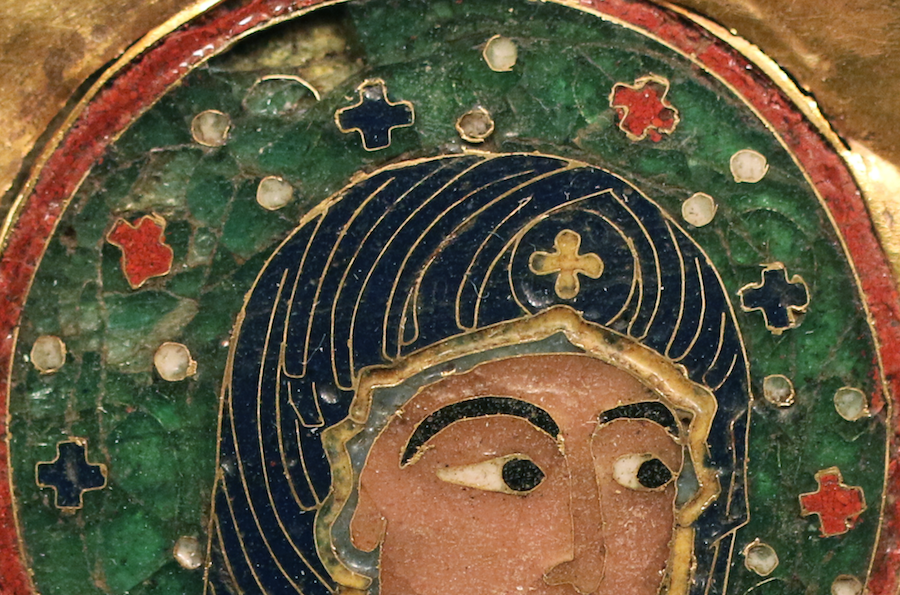
The 2015-2016 Mary Jaharis Center for Byzantine Art and Culture Dissertation Grant helped to support research for my dissertation, entitled “Byzantine Enamel and Material Power, Ninth to Fifteenth Centuries.” This project explore how cloisonné enamel became infused with cultural meaning through the association between enameling and Byzantine alchemy.
I requested assistance to help defray the cost of macrophotography equipment. Macrophotography is especially useful for documenting technical features when objects require non-invasive analysis methods. I applied the grant award towards the cost of a DSLR body, macro lens, and professional-grade tripod. During the grant period I obtained permission to privately photograph a number of surviving enameled objects using this equipment, such as the Limburg Staurotheke and the Pericopes of Henry II. General photographic permission for visitors has allowed me to shoot objects in museums in the United States, the UK, and Israel. In the upcoming year I will photograph objects in Venice and Tbilisi.
This summer I drafted my first chapter and began to synthesize evidence from my photographs alongside texts from the surviving Byzantine alchemical corpus. I aim to bring the materials, techniques, and skill used in the manufacture of cloisonné enamel into a larger discussion of Byzantine technological science and cultural power.
Courtney Tomaselli, Harvard University
Dissertation title: Piety, Patronage, Praxis: The Byzantine Psalter Vaticanus Graecus 1927
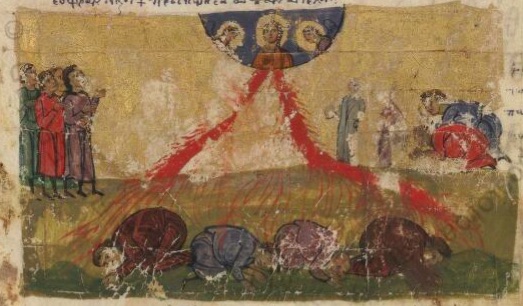
The Mary Jaharis Center Dissertation Grant helped defray expenses for two research trips relating to my dissertation “‘He was made man that we might be made God:’ Visualizing the way to theosis in the Byzantine psalter Vat. gr. 1927.” I examined manuscripts in repositories in Italy, Greece, and Turkey. Most important was the focus of my dissertation, the Byzantine psalter Vat. gr. 1927, for which only black and white photographs of its images were available. Following my visit the Vatican released a digital facsimile.
These trips produced fruitful results. Vat. gr. 1927 is an unusual Byzantine psalter that had at least one large image before each psalm and ode. Approximately thirty were cut out, with folios added to replace the text. I am now able to reconstruct the entire original manuscript and account for the location of each missing image and layout of the text, as neither is preserved in the replacements. I have also discovered unreported changes in the ruling, and can explain why four images were never created due to the manuscript’s production process and how it easily allowed for such errors. Numerous other small errors suggest the scribe and artist were two different people. Finally, I have determined that its artistic attribution to the Kokkinobaphos Master is incorrect due to elements of execution, style, iconography, and the quality of materials used. This also allows for an earlier date around the turn of the twelfth century. The information gleaned as a result of the dissertation grant will contribute to substantial portions of at least three chapters of my dissertation.